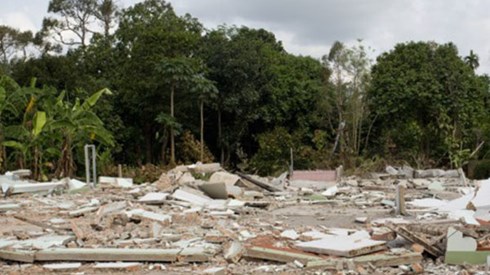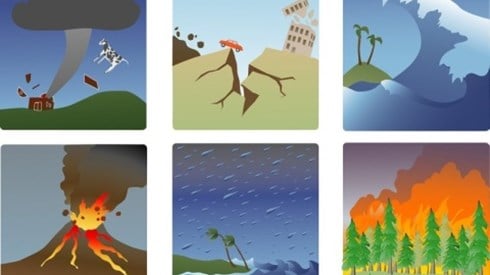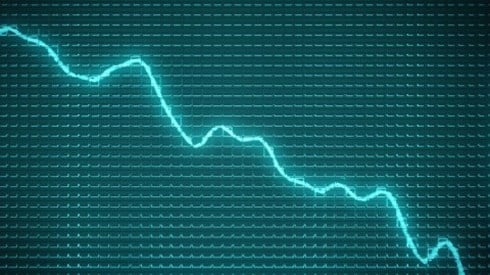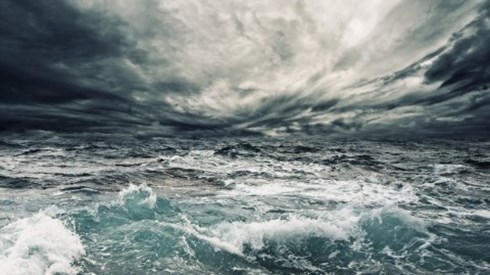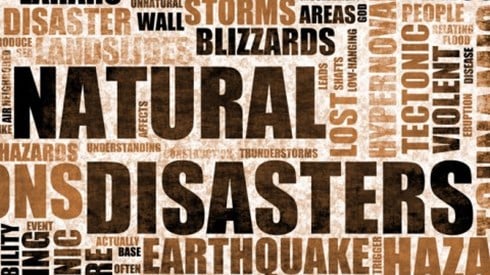2020 Catastrophe Experience Shows Growing Risk of Secondary Perils
April 07, 2021
With the COVID-19 pandemic and the related economic crisis and a high level of natural disasters, 2020 was a year that strained business, society, and the insurance industry.
In a recently released sigma report, Swiss Re notes that the $202 billion in global economic losses from natural and man-made catastrophes in 2020 is the ninth highest in sigma records for single-year economic losses.
Of the year's disaster total, $190 billion in losses resulted from natural catastrophes, the remaining $12 billion caused by man-made disasters. The year's 274 catastrophe events claimed 7,993 victims, according to Swiss Re.
The year's disaster losses were up from $150 billion in 2019, with the United States particularly hard hit by hurricanes, wildfires, and a record number of convective storms in the Midwest, the report says. Australia was also hard hit, according to Swiss Re, experiencing unprecedented drought, wildfires, and storms, while Asia experienced deadly and catastrophic floods resulting from monsoon rains.
The Swiss Re report, Natural Catastrophes in 2020: Secondary Perils in the Spotlight, but Don't Forget Primary-Peril Risks, updates and expands on data the reinsurer released earlier this year. The report notes that insurance covered $89 billion of 2020's overall economic losses resulting from disasters, the fifth-highest in sigma records and exceeding the previous 10-year average of $79 billion.
Of that total insured loss, $81 billion covered damages resulting from natural disasters, according to the sigma report, with Hurricanes Laura and Sally and a derecho that hit the US Midwest the largest natural peril loss events of 2020. Man-made catastrophes were responsible for the remaining $8 million.
"There was no single truly major peak primary-peril loss-making event," the report says. "Rather, it was a year of many small to mid-size, so-called secondary perils, events. Among these were severe convective storms (SCS). Even though highly localized, the damage and costs of SCS can be extreme. Of other secondary perils, overall losses from wildfires are rising fastest, mainly on account of widespread burning in California."
The report notes that insured losses from both primary and secondary perils have been growing since 1970, a trend Swiss Re expects to continue. "The two peril types are affected by the same loss-driving risk trends, including population growth, increasing property values in exposed regions, and the effects of climate change," the sigma report says. "In the absence of peak primary peril events, the rise in losses from secondary perils seen in recent years serves as a reminder that future extreme losses from primary perils may also grow significantly."
In 2020, the report cautions, the insurance industry was spared major losses from the North Atlantic hurricane season, largely as a function of luck, as most US landfalls did not hit highly populated areas. "There is no reason that future landfalls will not strike areas of economic wealth," the report says. "And, it was certainly no luck for those communities in Central America in the path of last year's hurricanes but which without insurance, had no recourse to compensation."
The 2020 catastrophe experience reinforced the notion that secondary perils pose an increasingly significant threat, the Swiss Re sigma report says. Secondary perils were responsible for more than 70 percent of insured losses from all of 2020's natural catastrophes, and the accumulated losses from many small and midsized events made the year the fifth costliest on record in terms of insured losses.
Severe convective storms and wildfires in the United States and Australia were the primary sources of loss. "In all regions where extreme weather events occurred, the experience was shaped by the complex interplay of natural-world phenomena, including climate change, and socio-economic trends," the report says.
Swiss Re notes that the term "primary perils" refers to large-scale catastrophes, typically tropical cyclones, earthquakes, and European winter storms. While those events tend to be less frequent, the losses they cause can be extreme.
"We use secondary perils as an umbrella term for natural catastrophes that typically generate losses of low to medium magnitude, but that can happen relatively frequently," the report says. Those can include SCS (including thunderstorms, hail, and tornadoes), drought, wildfire, snow, flash floods, and landslides.
"Primary perils can also trigger causally linked consequential losses, for instance from heavy rains in the wake of a tropical cyclone, a storm surge induced by a winter storm, or fire outbreak after an earthquake," the sigma report says. "We consider these to be 'secondary effects of primary perils' that also fall into the secondary perils bucket."
The report notes that losses from both primary and secondary perils have risen continuously since 1970. While primary perils are better understood than secondary perils, given the increase in associated losses from secondary perils, they need to be better understood to allow more complete risk assessment and sustainable underwriting of overall natural catastrophe risk, Swiss Re says.
Since the 1970s, SCS have been responsible for more insured damage than any other secondary peril, according to the report. In 2020, 40 separate SCS events generated accumulated insured losses of well more than $30 billion, the sigma report says. Swiss Re estimates that over the past 10 years, more than half the world's insured secondary peril losses were caused by severe convective storms.
Meanwhile, 2020's wildfire losses produced the third-highest annual insured losses for the peril ever, after the record seasons of 2017 and 2018, Swiss Re says, with most of the losses occurring in California. From 2016 to 2020, almost a quarter of all secondary peril insurance losses worldwide resulted from wildfires, the report says. Before 2016, on average, the peril represented just over 3 percent of losses and rarely exceeded 10 percent.
April 07, 2021
